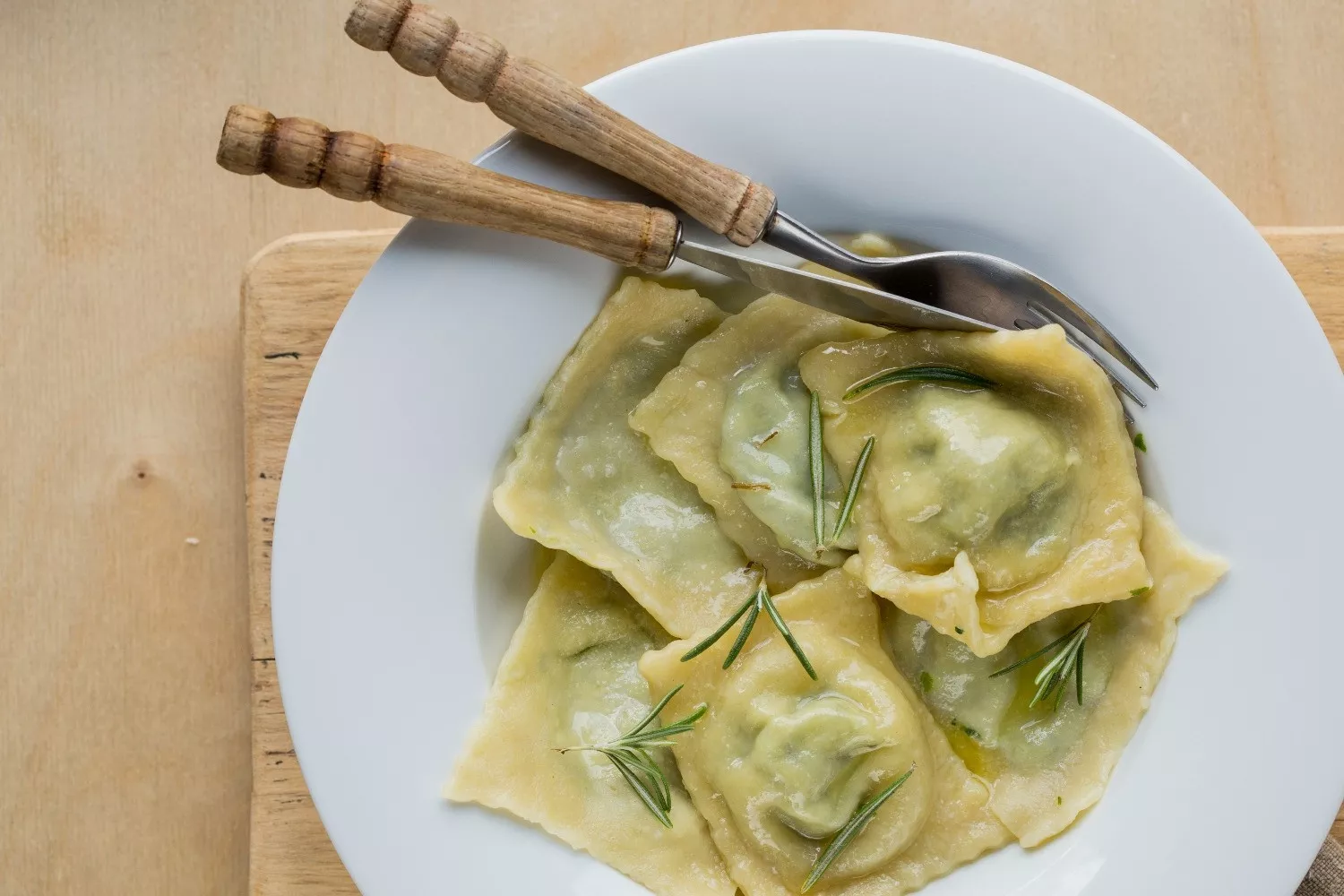Eggless Pasta vs. Pasta with Egg: A Culinary Comparison

Ingredients and Preparation
Eggless Pasta
Ingredients: Typically made from durum wheat semolina and water, sometimes with a bit of olive oil or salt.
Preparation: The dough is mixed to a firm consistency, then rolled and cut into various shapes. It is usually dried and is a staple in many kitchens.
Examples:
Pici: A thick, hand-rolled pasta originating from Tuscany, perfect with robust sauces.
Cavatelli: Small, shell-like pasta often paired with hearty sauces like sausage and broccoli rabe.
Pasta with Egg
Ingredients: Made from flour and eggs, with flour choices including all-purpose or "00" flour for a tender texture.
Preparation: The dough is mixed until smooth and elastic, then rolled and shaped. It is softer and more delicate than eggless pasta, making it ideal for fresh pasta dishes.
Examples:
Tortelli: A stuffed pasta similar to ravioli, often filled with ingredients like ricotta and spinach.
Tagliatelle: Long, ribbon-like pasta traditionally served with meat sauces like Bolognese.
Either Eggless or with Egg
Examples:
Corzetti: Coin-shaped pasta from Liguria, can be made with or without eggs, often stamped with intricate designs.
Lasagna Sheets: Used for layering in lasagna, can be made with just flour and water or with the addition of eggs for a richer texture.
Texture and Flavor
Eggless Pasta
Texture: Firmer and chewier, especially when cooked al dente. Ideal for hearty, chunky sauces.
Flavor: Neutral, allowing the sauce and other ingredients to stand out.
Pasta with Egg
Texture: Softer and more tender, with a silky mouthfeel. Cooks faster and suits lighter sauces and fillings.
Flavor: Richer, can be a star in simpler preparations.
Traditional Uses
Eggless Pasta
Common Dishes:
Pici: Often served with rich, meaty sauces or simple garlic and olive oil.
Cavatelli: Paired with hearty sauces like broccoli rabe and sausage.
Pairings: Robust sauces like marinara, bolognese, and pesto. Works well in baked dishes like lasagna.

Pasta with Egg
Common Dishes:
Tortelli: Typically filled with ricotta and spinach, served with butter and sage or in broth.
Tagliatelle: Perfect for creamy or meaty sauces like Alfredo or Bolognese.
Pairings: Light, creamy sauces and fresh ingredients like seafood, butter, and sage. Ideal for stuffed pastas with rich fillings.
Nutritional Differences
Eggless Pasta
Calories and Protein: Generally lower in calories and protein. Suitable for egg allergies or vegan diets.
Nutritional Value: High in carbohydrates, providing a good energy source.
Pasta with Egg
Calories and Protein: Higher in calories and protein due to eggs. Beneficial for increasing protein intake.
Nutritional Value: Contains more vitamins and minerals from eggs, including vitamin A and B vitamins.
Learn the Differences at Mama Florence Cooking School
To truly appreciate the differences between eggless pasta and pasta with egg, consider taking a hands-on cooking class at Mama Florence Cooking School in Florence. These classes offer:
Expert Guidance: Learn from experienced chefs who teach traditional techniques and recipes.
Hands-On Experience: Participate in every step of the pasta-making process, from mixing the dough to shaping the pasta.
Cultural Insights: Discover the historical and cultural significance of different pasta types and their regional uses.
Tasting Sessions: Compare the flavors and textures of eggless pasta and pasta with egg, paired with appropriate sauces.
Conclusion
Choosing between eggless pasta and pasta with egg depends on the dish and your dietary preferences. Eggless pasta, with its firm texture and neutral flavor, is perfect for hearty sauces. In contrast, pasta with egg offers a richer flavor and tender texture, ideal for lighter dishes. Both types of pasta have their place in the culinary world, enhancing a wide variety of recipes. For a comprehensive learning experience, join a cooking class at Mama Florence Cooking School and immerse yourself in the art of Italian pasta-making!
